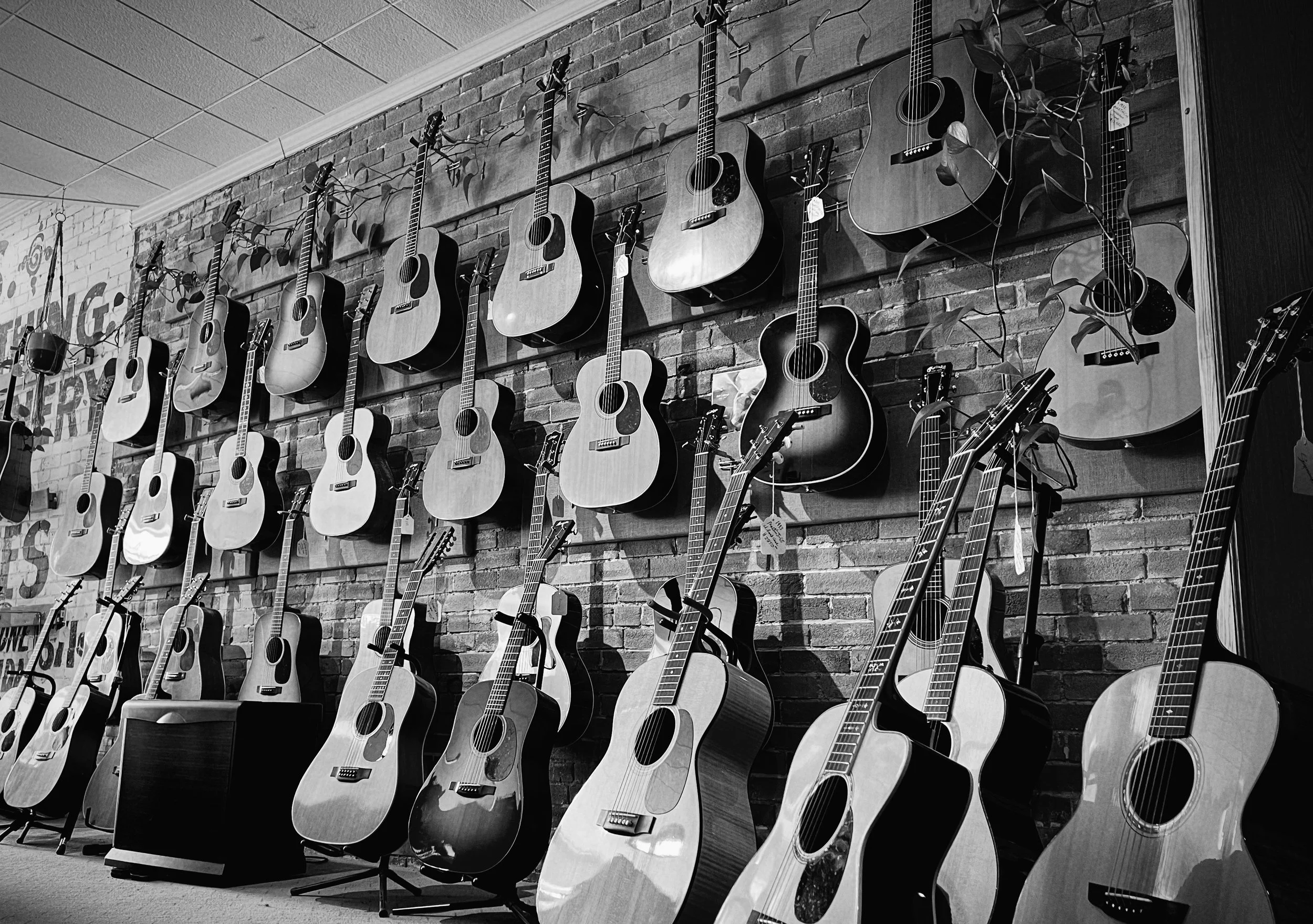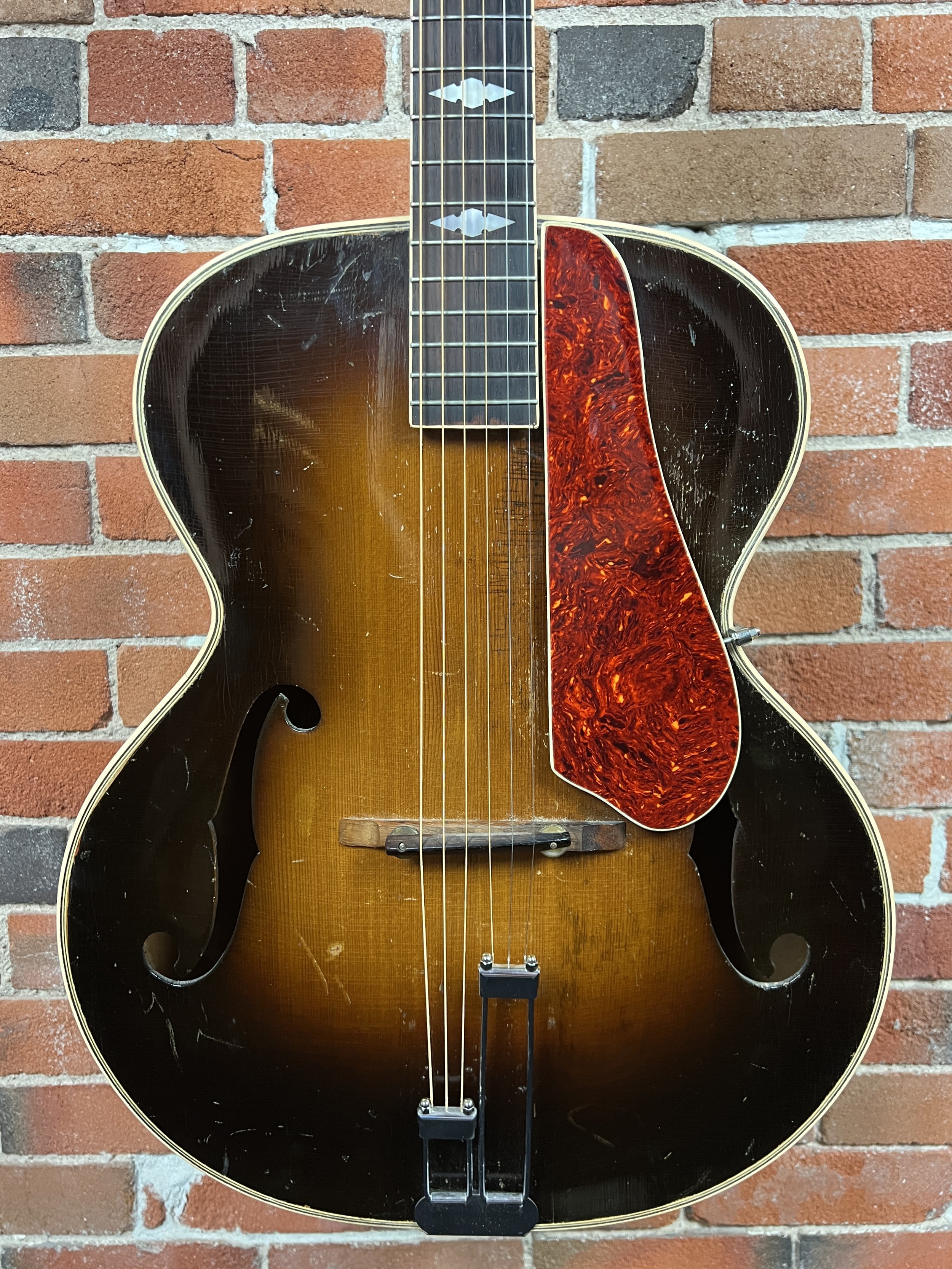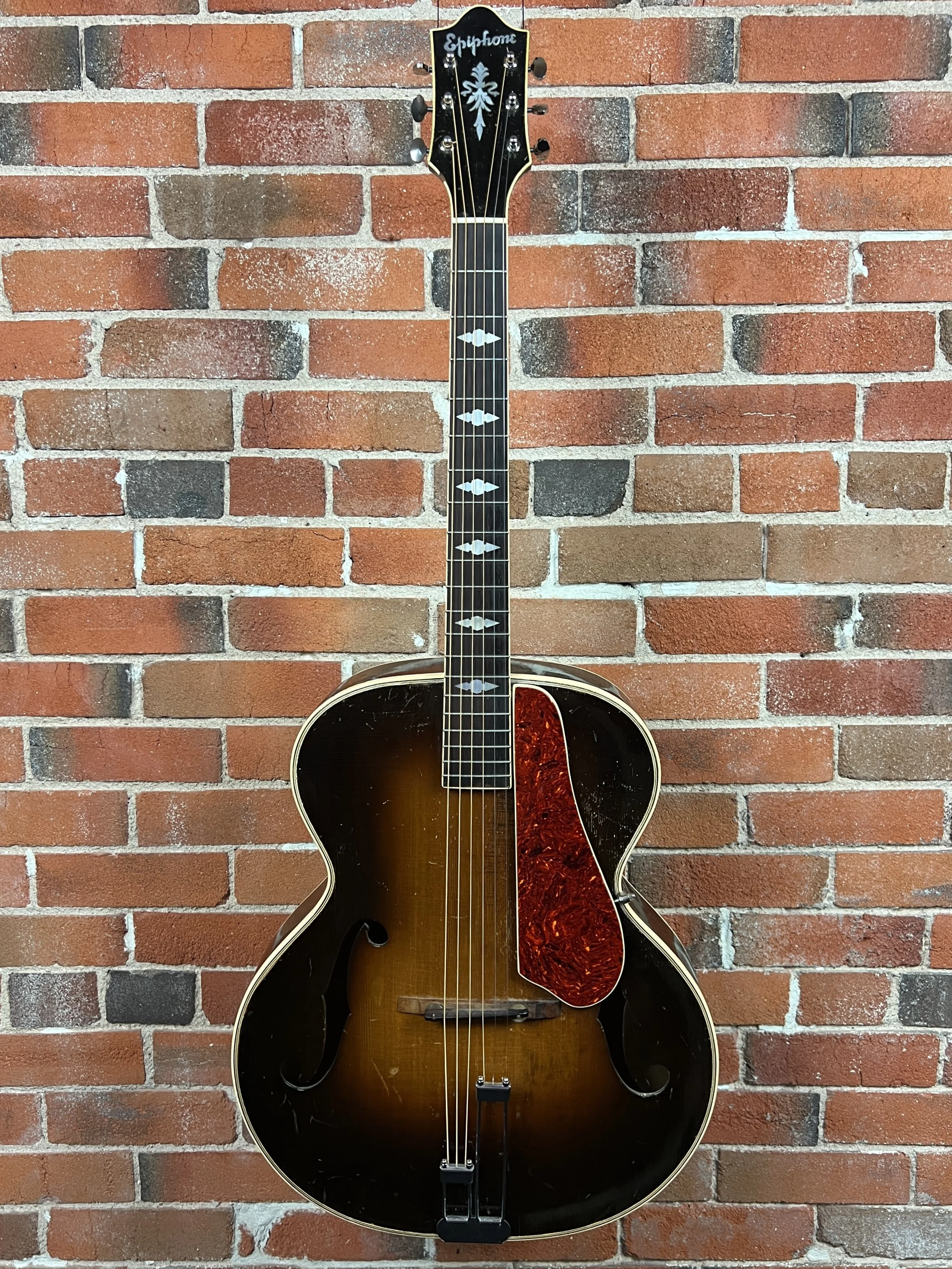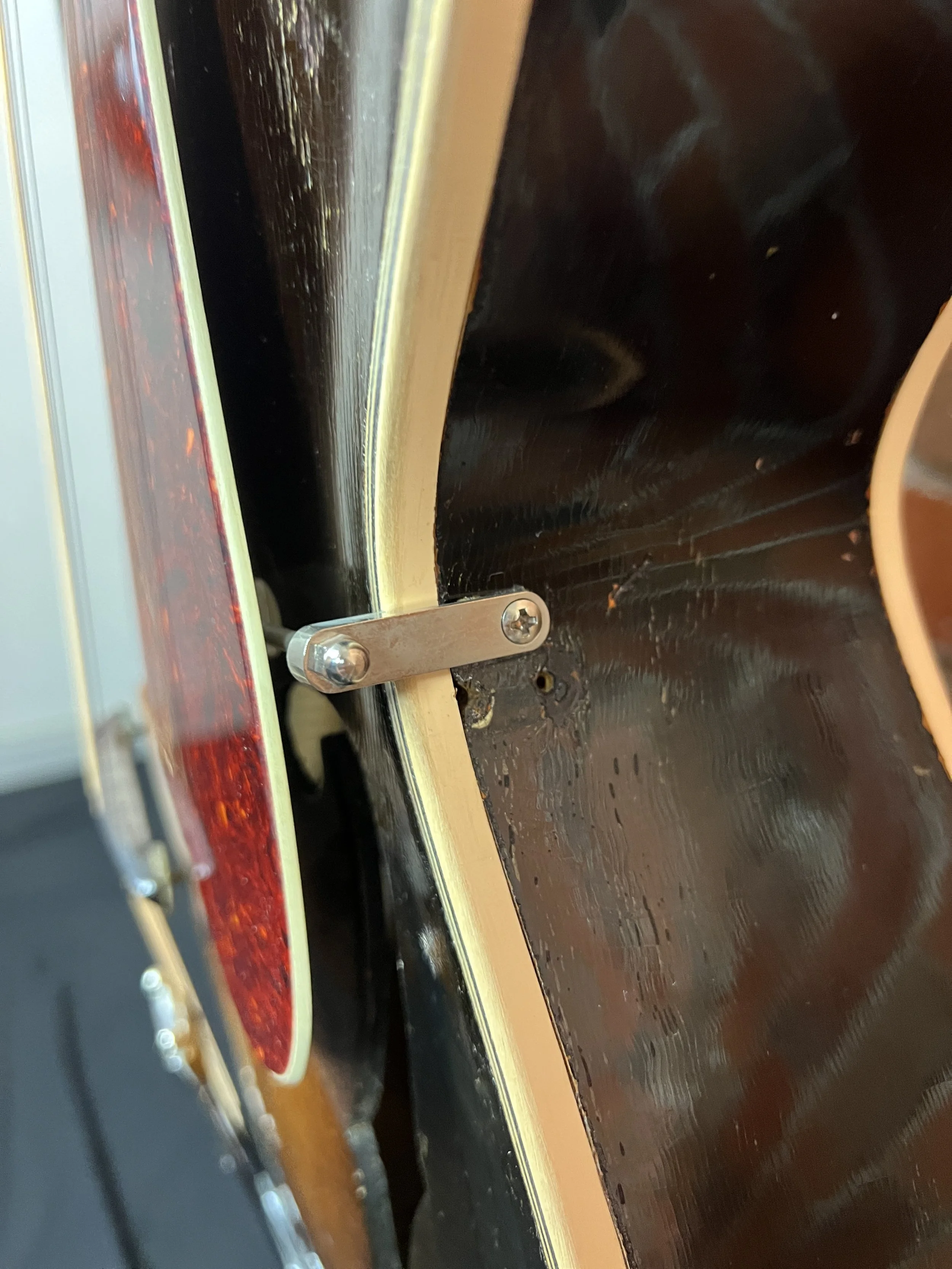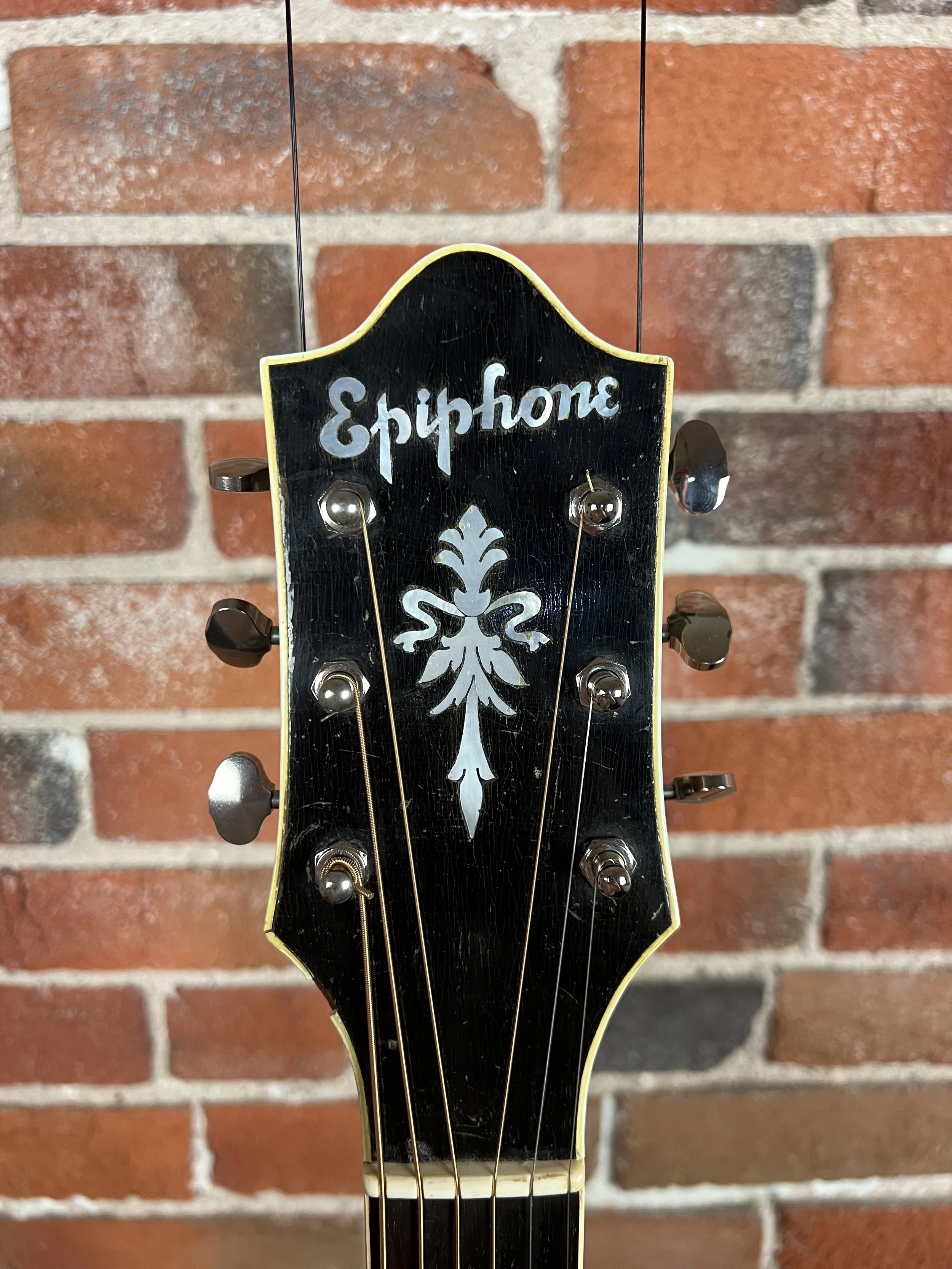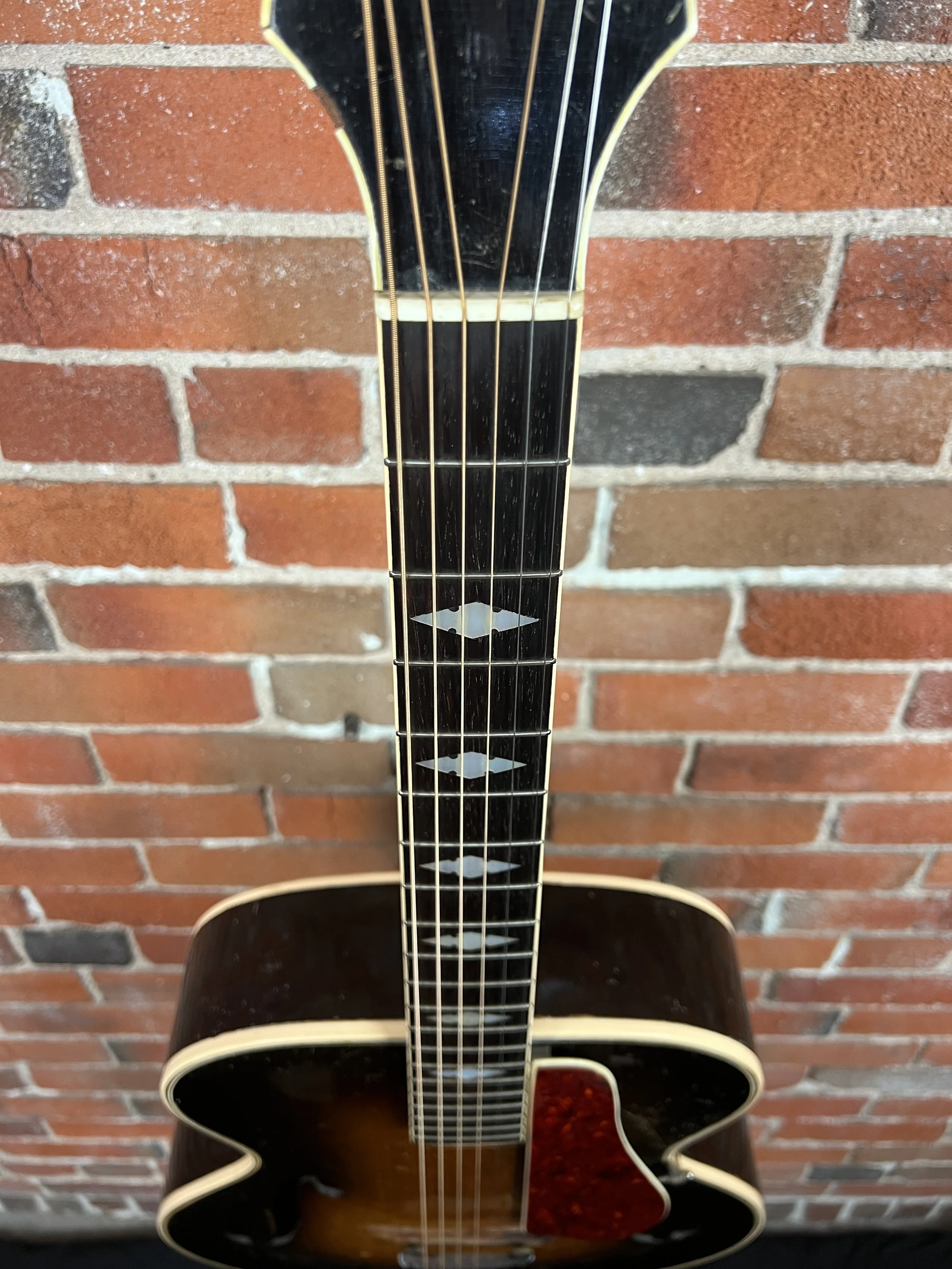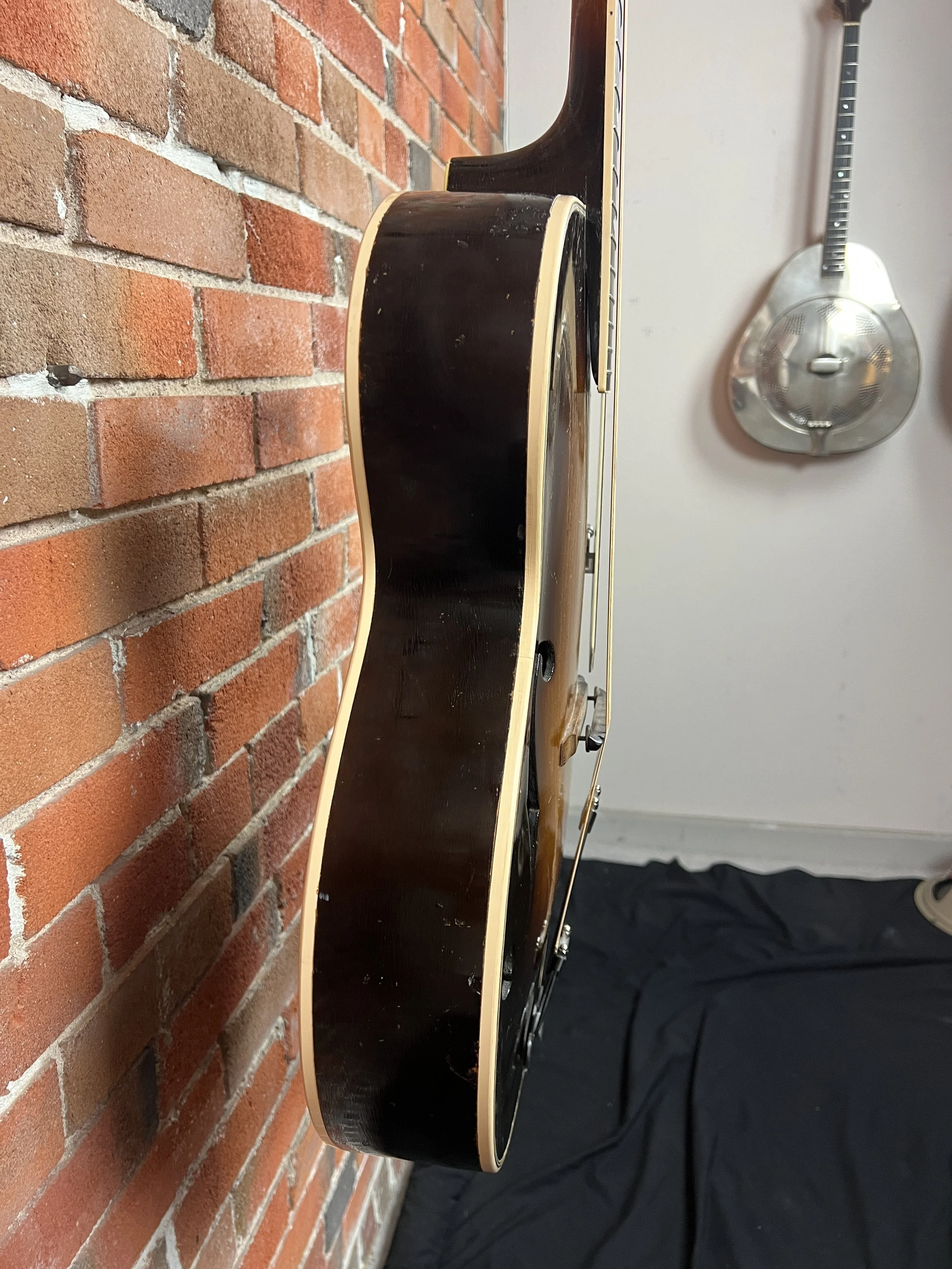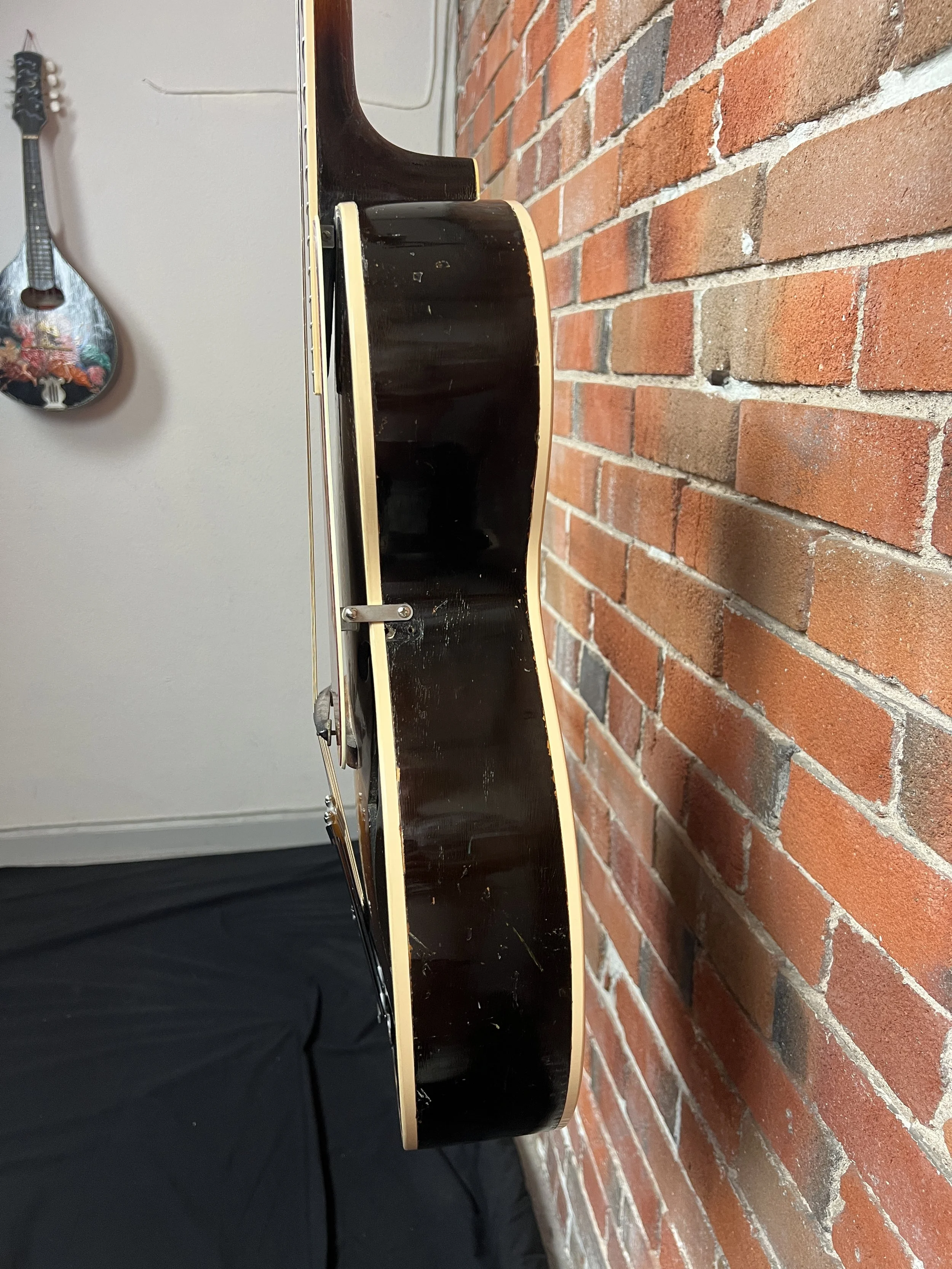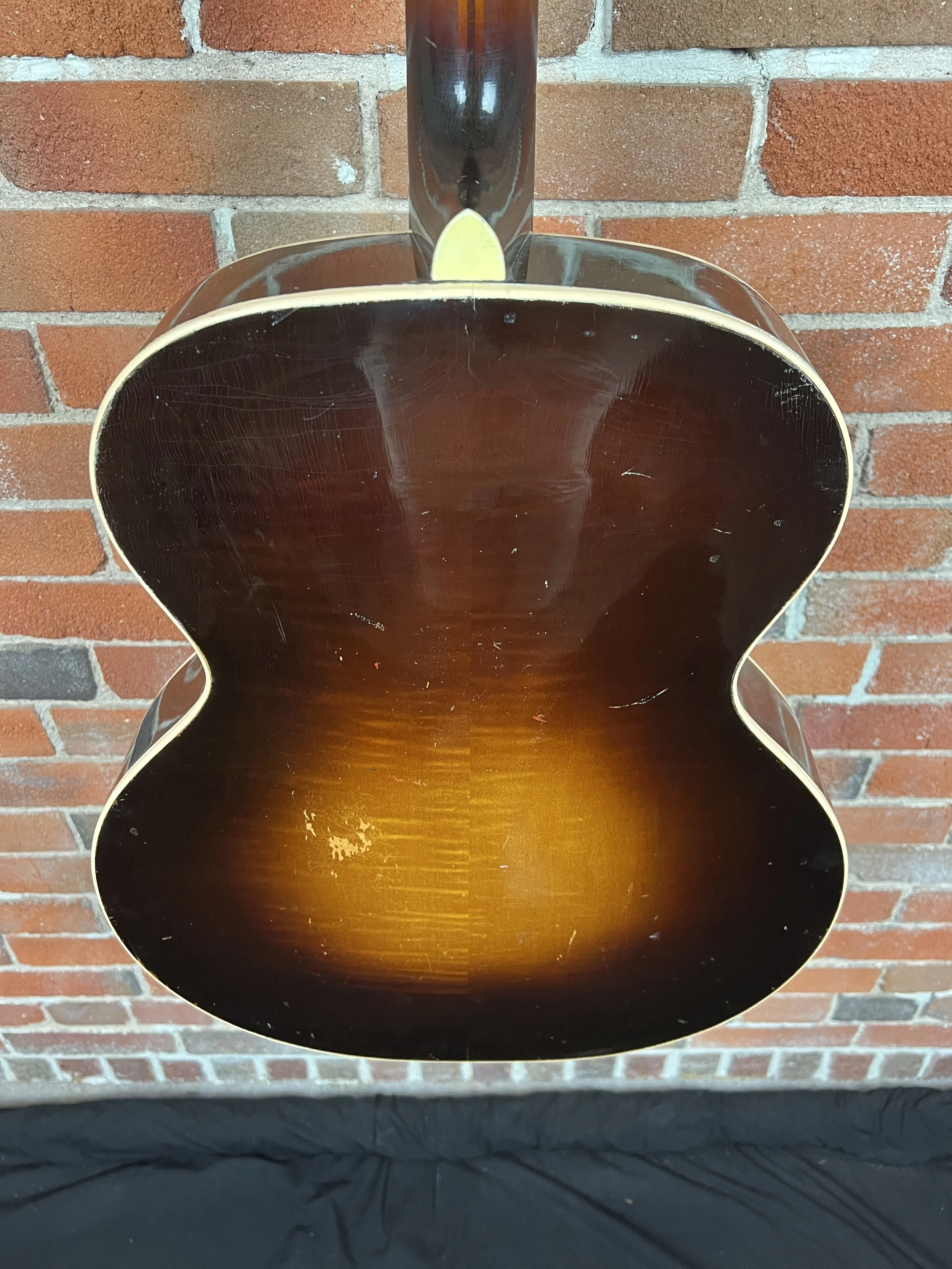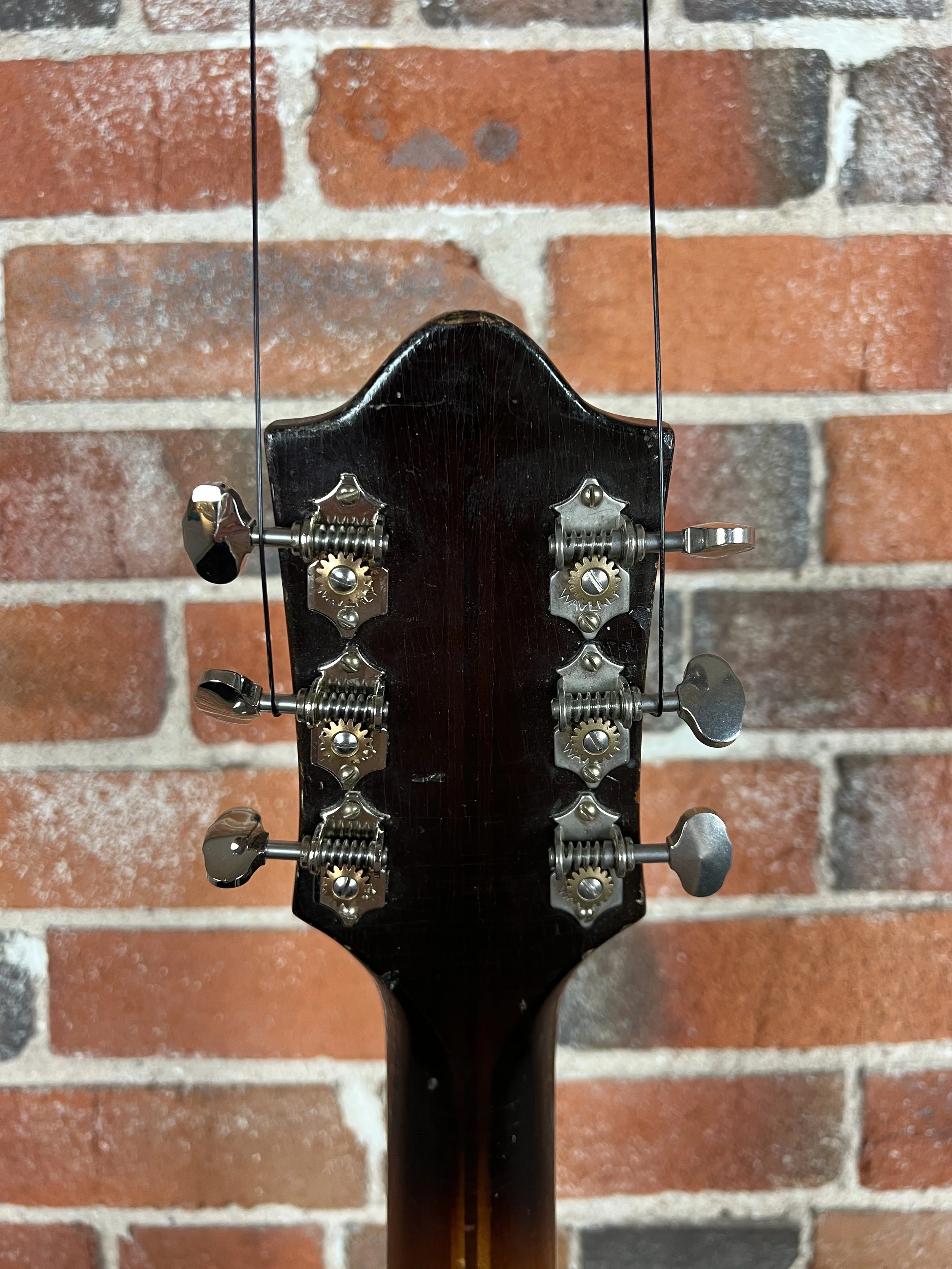1939 Epiphone Triumph
1939 Epiphone Triumph
The Epiphone Triumph was introduced in 1932 and quickly became the company’s most popular full-sized archtop, holding that spot until Epiphone’s New York era wound down in the mid-50s. Priced alongside the surprisingly less popular Gibson L-7, the Triumph shared the same bones as Epiphone’s fancier Deluxe and Broadway, making it a professional-grade guitar without the flash.
This one is a rare transitional example, still carrying the prewar Masterbilt label and arched headstock, but already outfitted with the newly introduced Frequensator tailpiece and one of Epi’s earliest adjustable truss rods. The carved Adirondack spruce top shows tight, even grain, paired with a tiger-flame maple back and sides, and the neck is Honduras mahogany with a three-ply center stripe.
The Brazilian rosewood fingerboard and ornate snowflake peghead inlay are classic Epiphone touches, and unlike most late-30s models, this one retains the wider 1 3/4" nut width—likely a special order as Epiphone was transitioning to thinner nuts around this time, as were most manufacturers.
Cosmetically, this guitar has seen some stuff but is still in great playing shape. The original pickguard is long gone, replaced with a later bound tortoise guard that suits the guitar well, though the bracket has been screwed into a new position. The finish is the original dark sunburst, but is fairly dinged up from nearly 90 years of use. The binding has been scuffed up overtime, possibly to remove yellowed lacquer, and there’s a bout a centimeter missing from the front of the headstock binding. The Frequensator on this guitar is a chrome replacement.
Tonally, it’s clear, bright, and open, with the kind of projection that made these guitars staples for working players. The neck has the typical soft V of the period and plays comfortably.
Comes with a period hard case.

